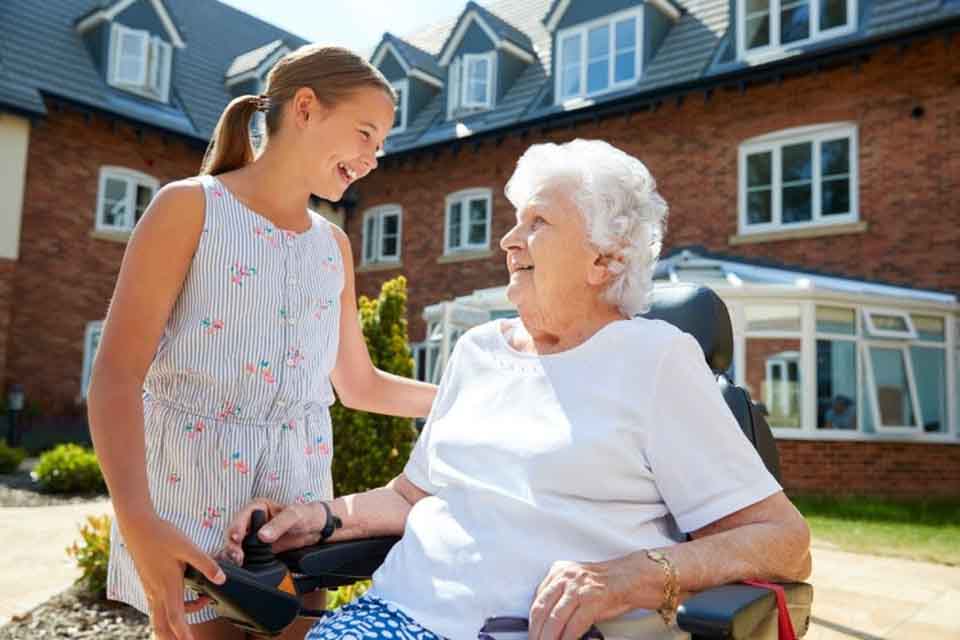When people think of the name Hershey, they likely think of chocolate. Yet Milton Hershey (1857–1945) did much more than start the Pennsylvania company that has become synonymous with sweets. He and his wife, Catherine, founded the Milton Hershey School for disadvantaged children in 1909, first donating a 486-acre farm. After Catherine’s death in 1915, he donated the entire Hershey fortune –– including a controlling stake in the company — to the school, establishing it as an innovator in education.
With more than 2,000 students in pre-kindergarten through 12th grade, the Milton Hershey School provides high-quality education, boarding, food, activities, and more, all free of charge. The school is deeply connected to the local community, forming and building on partnerships with the Hershey Company, Hersheypark, Penn State Health Milton S. Hershey Medical Center, and other businesses. Through the school’s partnerships, students gain experience and create vital connections that can serve them later in life. The increased engagement that comes with such programming also benefits the school, effectively improving academic life. Lastly, these connections support the community, where students serve as interns, volunteers, or mentors.
Educational leaders should consider forming partnerships between their schools and the community that benefit both students and local organizations.
Explore School and Community Partnership Possibilities
School and community partnerships can look very different, depending on several factors. The partnerships that elementary schools form with community and business leaders differ from collaborations between the community and high schools or colleges. Nevertheless, meaningful, valuable partnership opportunities are available to schools of all levels and community organizations such as businesses, nonprofits, and government offices.
Service Learning
Students engage in service learning when they go into the surrounding community and work to improve the local environment or community members’ lives. Service learning starts in the classroom, where educators explain the impact service can have, such as how volunteering at a homeless shelter supports citywide poverty reduction initiatives or how cleaning up a local park improves public health by offering a safe public space. Teachers might emphasize how public service is a way to make the world better and how many small acts can create big changes.
Student-Business Partnerships
High schools and colleges can work with local businesses or larger corporations to find ways for students to participate in mutually beneficial partnerships. These partnerships can introduce students to certain career paths. For example, a technology company might introduce students who love computers to the world of software engineering, inspiring them to choose a computer science major. Student-business partnerships can also help college students with clear career goals to gain applicable hands-on training in the field. Students interested in journalism, for example, might intern at the local newspaper, assisting reporters and editors and discovering how professionals do their jobs in the real world.
Youth Development Programs
Many institutions, especially government organizations and nonprofits, provide services for younger children. These programs often promote engagement as well as personal growth and development on both sides of the partnership. For example, for more than 70 years, the Police Athletic League has been placing children on athletic teams coached by police officers, fostering positive relationships between the police and the community.
Adult Education Courses
When the regular school day is over, institutions from elementary schools to colleges host evening adult education courses. These programs are designed for community members who want to learn a new skill or expand their intellectual horizons in a relaxed academic atmosphere.
Reap the Benefits of Successful Partnerships
Both educational institutions and their surrounding communities can benefit from collaboration.
Community Betterment
Students who serve the public or work with local businesses are actively improving their communities. Projects might include making public spaces cleaner and more accessible, assisting local businesses, or helping younger community members learn new skills. School and community partnerships contribute to stronger, healthier, and better-connected communities.
Economic Support
Partnerships between schools and community organizations allow individuals to gain an understanding of the important role schools play in local development. This gives community members a feeling of involvement and ownership with the school, increasing visibility and fundraising support.
Less Competition for Resources
When schools and businesses or nonprofit organizations create partnerships, they narrow the field of applicants seeking the same grants or funds. Instead of competing, they can collaborate to draw in greater investment.
How Leaders in Education Can Help
The benefits of school and community partnerships are clear: better public spaces, improved services, a more dynamic educational experience, and an increasingly connected community. Fostering these relationships takes time and planning to align the educational visions of educators and community partners, which requires leaders who can establish collaborations that meet the highest educational standards while offering benefits to the community.
How American University’s EdD in Education Policy and Leadership Emphasizes School and Community Partnerships
Becoming a leader who understands the importance of school and community partnerships is one of the many benefits of an advanced education that focuses on developing educational professionals. A degree such as American University’s online Doctor of Education in Education Policy and Leadership, which includes courses in building teams and growth culture, exercising conscious leadership, and political navigation, teaches educators how to affect policy on the local, state, and national levels. The four-year program, including a residency and dissertation, provides students with an advanced understanding of research management, innovation, leadership, and different methods of collaboration, laying the groundwork for meaningful and productive partnerships. Explore how American University’s online EdD in Education Policy and Leadership can help you better your institution and your community.

